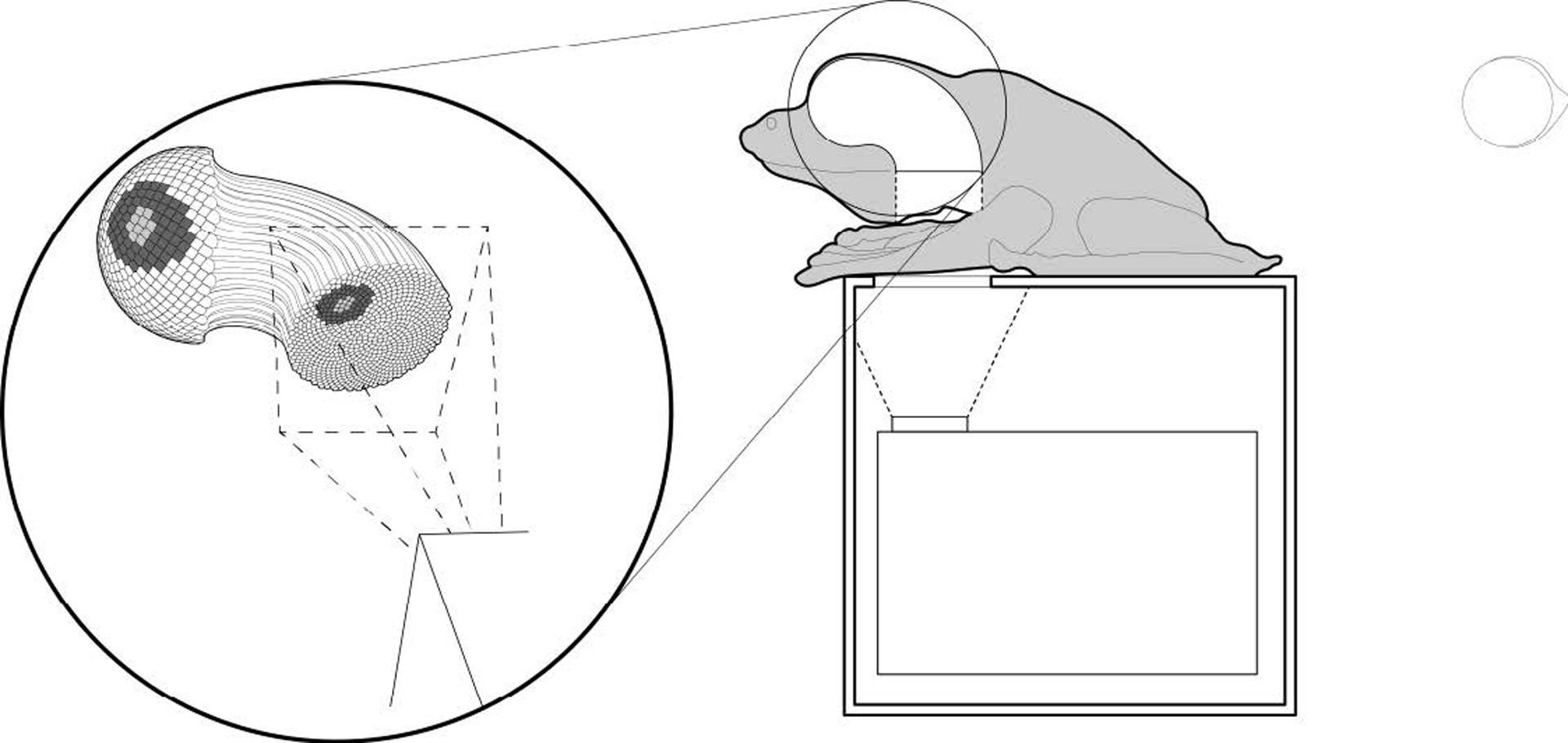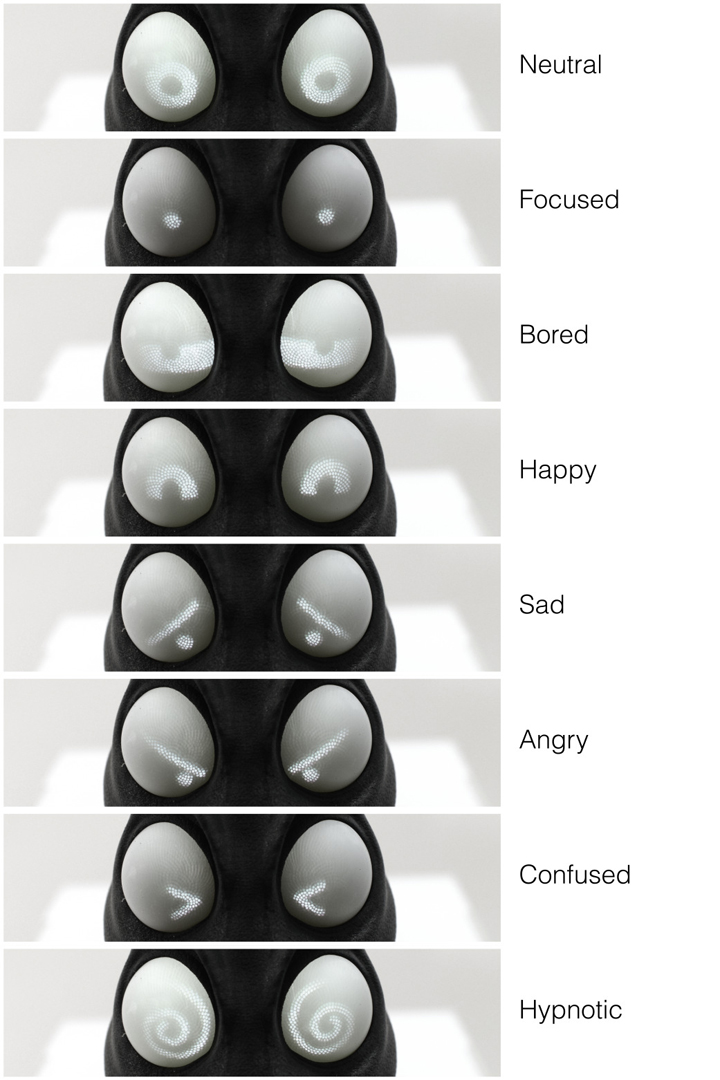“PAPILLON: Expressive Eyes for Interactive Characters” by Brockmeyer, Poupyrev, Mahler, Dauner and Krahe
Conference:
Experience Type(s):
Entry Number: 12
Title:
- PAPILLON: Expressive Eyes for Interactive Characters
Organizer(s)/Presenter(s):
Description:
PAPILLON is a technology for designing highly expressive animated eyes for interactive characters, robots and toys. Expressive eyes are essential in any form of face-to-face communication [2] and designing them has been a critical challenge in robotics, as well as in interactive character and toy development.
The classic approach to designing eyes, in the movie and locationbased entertainment industry, is to build mechanically actuated, animatronic eyes [1]. This may produce highly realistic eyes that can indicate gaze direction and blink, but they tend to be complex, expensive and difficult to scale down to fit into small characters, where space for motors and driving electronics may not be available. Crucially, the animatronic approach is not applicable to fictional characters from animated movies, comics and cartoons whose eye expressions are non-realistic and highly exaggerated. Indeed, the eyes of a character in animated features can take any size and shape to communicate a character’s emotions and display all sorts of symbols to indicate its intentions, e.g. “dollar signs” for greed or a “heart” for romance.
Video projection has also been used to back-project images of eyes and faces onto surfaces shaped as a character’s face. This allows for the design of animated and highly expressive eyes for largescale characters and robots [2]. It is, however, not scalable to small characters due to limited space. Furthermore, popular characters often take on a broad variety of appearances, from a talking sea sponge to a chameleon, with complex faces and bodies, where eyes could be sunk deep inside or stick out. Designing free air optical paths for these characters is difficult and often impossible unless we can design a technology that can effectively guide light between any two locations on the body of the character. This is the approach that we investigate in PAPILLON.
References:
Basset, K., Hammon, M., Smoot, L. A Fluid-Suspension, Electromagnetically Driven Eye with Video Capability for Animatronic Applications, In IEEE Humanoid Robots, 2009. pp. 40-46
Delaunay, F., de Greeff, J., Belpaeme., T. A Study of a Retro-Projected Robotic Face and its Effectiveness for Gaze Reading by Humans. In ACM/IEEE Human-Robot Interaction, 2010. pp. 39-44
Willis, K., Brockmeyer, E., Hudson, S., Poupyrev, I. Printed Optics: 3D Printing of Embedded Optical Elements for Interactive Devices. In ACM UIST 2012, pp. 589-598






